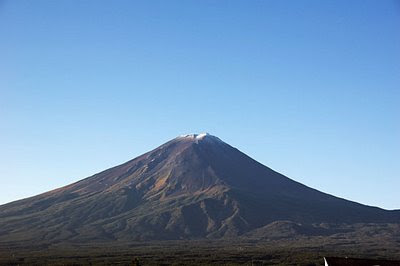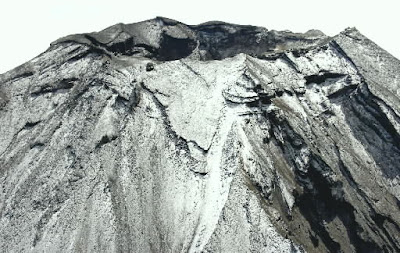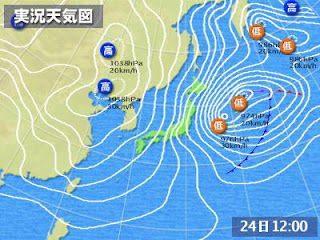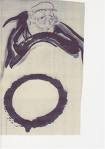[ . BACK to WORLDKIGO . TOP . ]
:::::::::::::::::::::::::::::::::::::::::::::::::::::::::::::::::::::::::::::::::::::::::::::::::::::
暑さにも負けず遍路の道長き
atsusa ni mo
makezu henro no
michi nagaki
not even yielding
to the great heat ...
pilgrim on the road
Today I visited a temple in Yamaguchi ... online of course ...
. . . 龍蔵寺 . . . Ryuzo-Ji
My daily duty walk along our rural memorial pilgrimage of Shikoku was really HOT, 36 degrees in the shadow ...
atsusa ni mo makezu ... kept ringing in my mind all the way ... :o)
:::::::::::::::::::::::::::::::::::::::::::::::::::::::::::::::::::::::::::::::::::::::::::::::::::::
 source : Tomikichiro Tokuriki 1902-1999
Miyazawa Kenji wrote this famous poem ...
source : Tomikichiro Tokuriki 1902-1999
Miyazawa Kenji wrote this famous poem ...
ame ni mo makezu
ame ni mo makezu
kaze ni mo makezu
yuki ni mo natsu no atsusa ni mo makenu
jōbu na karada wo mochi
yoku wa naku
kesshite ikarazu
itsu mo shizuka ni waratte iru
ichi nichi ni genmai yon gō to
miso to sukoshi no yasai wo tabe
arayuru koto wo
jibun wo kanjō ni irezu ni
yoku mikiki shi wakari
soshite wasurezu
nohara no matsu no hayashi no kage no
chiisa na kayabuki no koya ni ite
higashi ni byōki no kodomo areba
itte kanbyō shite yari
nishi ni tsukareta haha areba
itte sono ine no taba wo oi
minami ni shinisō na hito areba
itte kowagaranakute mo ii to ii
kita ni kenka ya soshō ga areba
tsumaranai kara yamero to ii
hidori no toki wa namida wo nagashi
samusa no natsu wa oro-oro aruki
minna ni deku-no-bō to yobare
homerare mo sezu
ku ni mo sarezu
sō iu mono ni
watashi wa naritai
not losing to the rain
not losing to the wind
not losing to the snow or to the heat of the summer
with a strong body
unfettered by desire
never losing temper
cultivating a quiet joy
every day four bowls of brown rice
miso and some vegetables to eat
in everything
count yourself last and put others before you
watching and listening, and understanding
and never forgetting
in the shade of the woods of the pines of the fields
being in a little thatched hut
if there is a sick child to the east
going and nursing over them
if there is a tired mother to the west
going and shouldering her sheaf of rice
if there is someone near death to the south
going and saying there's no need to be afraid
if there is a quarrel or a suit to the north
telling them to leave off with such waste
when there's drought, shedding tears of sympathy
when the summer's cold, walk in concern and empathy
called a blockhead by everyone
without being praised
without being blamed
such a person
I want to become
© More in the WIKIPEDIA !

kokeshi with this poem
..................................................................................
Bending neither to the rain
Nor to the wind
Nor to snow nor to summer heat,
Firm in body, yet
Geoffrey Bownas and Anthony Thwaite,
The Penguin Book of Japanese Verse, 1964
Neither rain
nor wind
nor snow nor summer’s heat
will affect his robust body. . . .
Makoto Ueda,
Modern Japanese Writers and the Nature of Literature, 1982
Undaunted by the rain,
Undaunted by the wind,
Undaunted by the snow or the summer heat,
With a strong body
Donald Keene,
Dawn to the West, 1984
Strong in the rain
Strong in the wind
Strong against the summer heat and snow
He is healthy and robust
Roger Pulvers,
Kenji Miyazawa: Poems, 1997
source : japanfocus.org
:::::::::::::::::::::::::::::::::::::::::::::::::::::::::::::::::::::::::::::::::::::::::::::::::::::
 Kenji Miyazawa 宮沢 賢治, Miyazawa Kenji
27 August 1896 - 21 September 1933,
Kenji Miyazawa 宮沢 賢治, Miyazawa Kenji
27 August 1896 - 21 September 1933,
Hanamaki, Iwate, Japan
was a poet and author of children's literature in early Shōwa period Japan. He was also known as a devout Buddhist, vegetarian and social activist.
Miyazawa was born in what is now Hanamaki city, Iwate Prefecture as the eldest son of a wealthy pawnbroker. From an early age, he was disturbed by what he perceived to be the social inequity between his well-to-do family, who lived by lending money to the impoverished farmers in the area. In 1918, he graduated from Morioka Agriculture and Forestry College. He was a bright student, so his academic advisor wanted him as an assistant professor. However, differences with his father over religion (he converted to the more activist Nichiren sect), and his repugnance for the family pawnshop business (he yielded his inheritance to his younger brother), created much unhappiness in his early life, and in 1921, he departed Hanamaki for Tokyo.
In Tokyo, while staying with a friend, he was introduced to the works of poet
Sakutarō Hagiwara, and was encouraged to start writing. After eight months in Tokyo, during which time he began to write children's stories, he returned to Hanamaki due to the illness and subsequent death of his younger sister.
He found employment as a teacher in agricultural science at Hanamaki Agricultural High School (花巻農学校). Saving his meagre salary, he was able to finance the publication of his first collection of children's stories and fairy tales (
Chūmon no Ōi Ryōriten - 注文の多い料理店 - The Restaurant of Many Orders) and a portion of a collection of free-verse poems
(Haru to Shura - 春と修羅 - Spring and Asura) in 1924. Although neither work was a commercial success, his writings came to the attention of poets Kotaro Takamura and Shimpei Kusano, who admired his writing greatly and introduced it to the literary world.
...
Miyazawa's works were influenced by contemporary trends of romanticism and the proletarian literature movement, but above all were influenced by his devotion to the Lotus Sutra in particular.
Miyazawa struggled with pleurisy for many years, and was often incapacitated for months at a time. He died in 1933 of pneumonia.
It may also be noted that Miyazawa had at least a passing interest in Esperanto. He loved his native province, and
Ihatov (or Ihatovo), the name of the fictional location that appeared in his works, was constructed from the name Iwate (Ihate in the older spelling) in a manner similar to Esperanto.
© More in the WIKIPEDIA !
Gingatetsudō no Yoru
Night on the Galactic Railroad
1996 marked the 100th anniversary year of the birth of Kenji Miyazawa.

Miyazawa's mix of East and West begins with the names of the two young characters of the story: Jovanni (Giovanni) and Kanpanera (Campanella). The story takes place during the imaginary "Centaurus" Festival, a time when lanterns are lit to show deceased ancestors the way home. This imaginary festival occurs in August, and in the story, Miyazawa images children running and scampering, yelling that Centaurus is "dropping dew" [no doubt, a somewhat misplaced reference to the Perseids].
The Milky Way Train: Celebrating Kenji Miyazawa
By: Steve Renshaw and Saori Ihara, 1999
:::::::::::::::::::::::::::::::::::::::::::::::::::::::::::::::::::::::::::::::::::::::::::::::::::::
Miyazawa Kenji wrote a famous book about a bear hunter
なめとこ山の熊 Nametoko yama no kuma
The bears of Nametoko Mountain

It's interesting, that business of the bears on Mt. Nametoko. Nametoko is a large mountain, and the Fuchizawa River starts somewhere inside it. On most days of the year, the mountain breathes in and breathes out cold mists and clouds. The peaks all around it, too, are like blackish green slugs or bald sea goblins..........
Read more here:
WKD : Bears as Kigo
:::::::::::::::::::::::::::::::::::::::::::::::::::::::::::::::::::::::::::::::::::::::::::::::::::::
落し文宛名は風の又三郎
otoshibumi atena wa Kaze no Matasaburoo
a lost letter -
the address is
Kaze no Matasaburo
Satoo Hirokazu 佐藤博一
This needs some explanation.
otoshibumi is the name of the leaf-cut weevil. The pun in Japanese does not go well if I use the name of the animal for the first line.
 quote
Kaze no Matasaburô - A Wind Boy
quote
Kaze no Matasaburô - A Wind Boy
Miyazawa's collection of stories for children, published after his death in 1933, Kaze no Matasaburô contains six stories. This book is in fine binding with illustrations by Koana Ryûichi, and an introduction by Tsubota Jôji, who had already established his position in the world of children's literature. This book was recommended by the Ministry of Education and well read. With Kaze no Matasaburô, Miyazawa became famous as an author for children.
"Kaze no Matasaburô" is about a strange boy named
Takada Saburô. On a windy day, he appears in an elementary school at a mountainside. He says he has come from Hokkaido with his father. His new classmates think he might be Matasaburô, a wind boy. He spent twelve days there, studying and playing with the village children. As wind blows when he does something, the boys come to believe he is really Matasaburô. Then, on a windy day, he is gone. Although it is an unfinished work, it is regarded as the best work of Miyazawa, as well as one of the masterpieces in the history of Japanese children's literature. It is widely read today.
Kaze no Matasaburô was dramatized by Gekidan Tôdô, and made into a movie in 1940. The song at the beginning of this story became very popular. A reprint of the original edition was published by Holp Shuppan in 1971.
source : www.iiclo.or.jp
:::::::::::::::::::::::::::::::::::::::::::::::::::::::::::::::::::::::::::::::::::::::::::::::::::::
. Hagiwara Sakutaro 萩原朔太郎 .
I wrote the above haiku whilst researching for this
Shikoku Fudo Pilgrimage
Shikoku Henro Pilgrimage to 88 Temples
. . . Read my Haiku Archives
:::::::::::::::::::::::::::::::::::::::::::::::::::::::::::::::::::::::::::::::::::::::::::::::::::::::::::::::::::::::::::
[ . BACK to DARUMA MUSEUM TOP . ]
[ . BACK to WORLDKIGO . TOP . ]
- #miyazawakenji -
:::::::::::::::::::::::::::::::::::::::::::::::::::::::::::::::::::::::::::::::::::::::::::::::::::::::::::::::::::::::::::
























